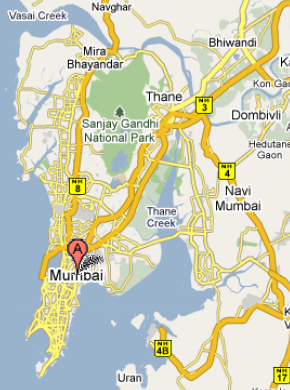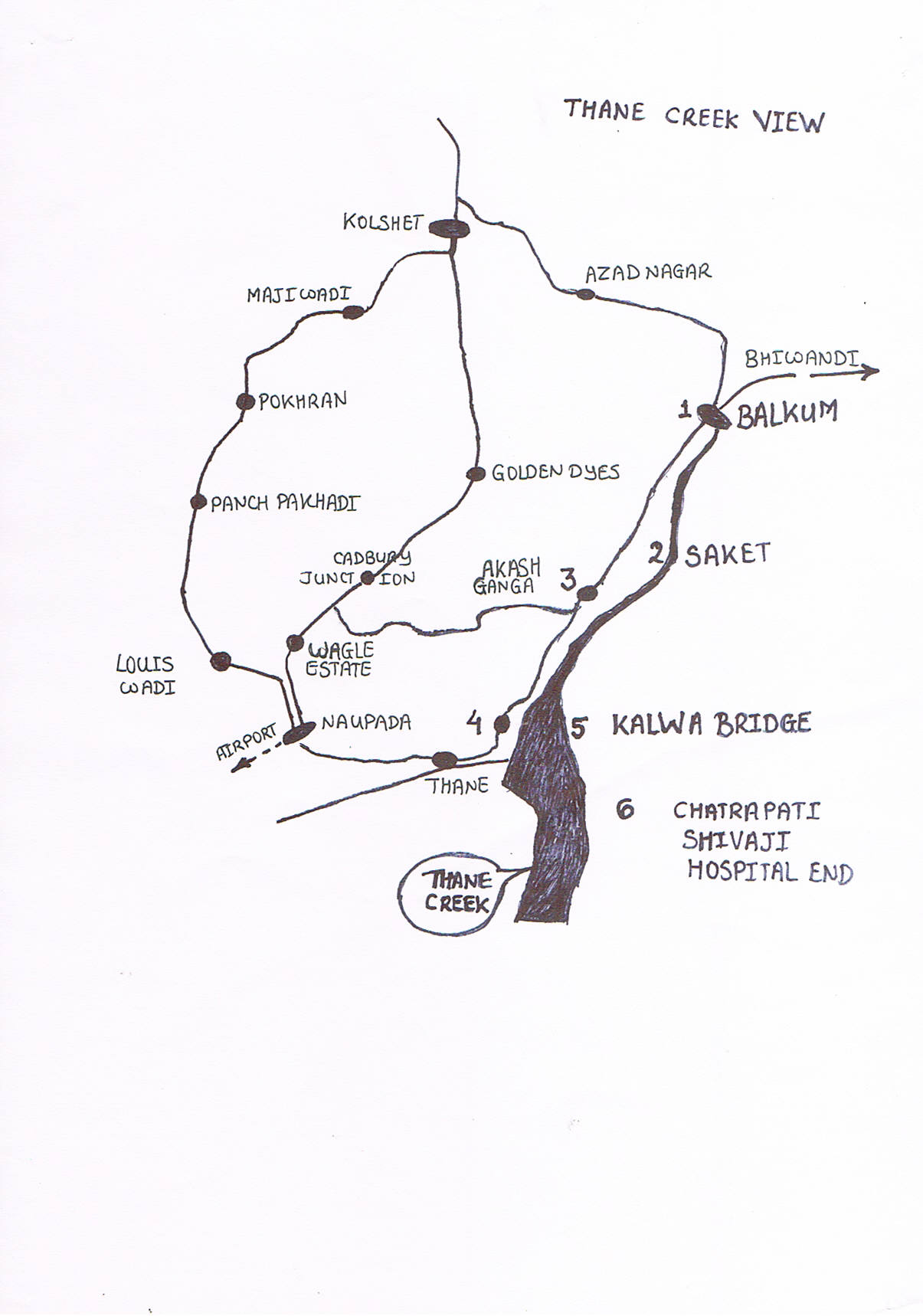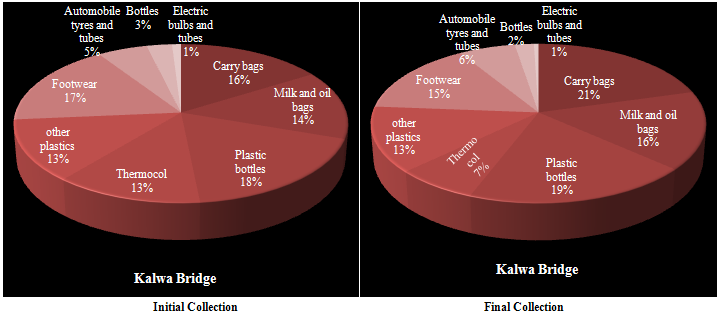-
Paper Information
- Next Paper
- Paper Submission
-
Journal Information
- About This Journal
- Editorial Board
- Current Issue
- Archive
- Author Guidelines
- Contact Us
World Environment
p-ISSN: 2163-1573 e-ISSN: 2163-1581
2012; 2(3): 24-30
doi: 10.5923/j.env.20120203.01
Study of Some Major Non-Biodegradable Solid Wastes Along Thane Creek of Mumbai
Pravin U. Singare
Department of Chemistry, Bhavan’s College, Munshi Nagar, Andheri (West), Mumbai, 400058, India
Correspondence to: Pravin U. Singare , Department of Chemistry, Bhavan’s College, Munshi Nagar, Andheri (West), Mumbai, 400058, India.
| Email: |  |
Copyright © 2012 Scientific & Academic Publishing. All Rights Reserved.
Abstract Thane creek is one of the most important ecosystems around Mumbai, and the mangroves surrounding the ecosystem form the vital green lung for the residents. It is also an important feeding and breeding ground for fishes. In recent past man has misused this ecosystem by way of releasing sewage, dumping solid waste, etc. and has succeeded in chocking the ecosystem. The results of present investigation indicates that plastics carry bags, milk/oil bags, plastic bottles and foot wares are some of the major NBDSW materials responsible for solid waste pollution. On the basis of the findings, it is suggested that accumulation of plastics and synthetic rubber can be controlled by recycling and incineration, while accumulation of glass can be controlled only by recycling. The objective of the present work is to throw light on deteriorating condition of Thane creek, suggesting the need to prepare a well-planned waste management system.
Keywords: Non-Biodegradable Solid Waste, Municipal Solid Waste, Plastics, Synthetic Rubber, Glass, Quantification, Environmental Hazard, Environmental Pollution, Thane Creek, Kalwa Bridge, Balkum, Saket, Akashganga, Mumbai
Article Outline
1. Introduction
- The wetland of Thane Creek, located at Thane, Mumbai, India, has attracted much attention of environmental biologists over the last few decades, as this creek has been subjected to a lot of pollution from the Asia’s biggest Thane– Belapur Industrial Complex located at the south of Mumbai harbor along the west coast of India. The creek area is one of the most important ecosystems around Mumbai and Thane, and the mangroves surrounding the ecosystem form the vital green lung for the residents. It is also an important feeding and breeding ground for fishes. Locals have been living in harmony amidst this ecosystem for ages, but in recent past man has misused this ecosystem by way of releasing sewage, dumping solid waste, etc. and has succeeded in chocking the ecosystem. The creek is tidally influenced with the dominance of neretic waters and negligible fresh water flow except during the monsoon. The substratum of the creek in the midstream is made up of consolidated and unconsolidated boulders intermingled with lose rocks and rarely with sand and gravel. Extensive mudflats are formed along both the banks of the creek which are characterized by the growth of mangroves. This area is also highly bio productive and yields about 2 to 3 thousand metric tones of fish annually. However, recent rapid urbanization and industrialization with improper environmental planning has resulted in discharge of industrial and sewage effluents into the creek[1]. This area was developed by the state government essentially for the chemical industries towards the beginning of the sixties and at present about 25 large industries and about 300 medium and small scale units using hazardous chemicals is located out of the total of 2000 units located in this zone. The industrial area utilizes about 45000 m3/day of fresh water. The effluent discharge, treated and untreated amounts to 28750 m3/day i.e. 64% of the total industrial effluents generated in Thane Creek area. Except for a few major industries, the medium and the small scale industries discharge their treated or untreated effluents through the unlined surface drains into the Thane Creek. In addition to this, domestic sewage discharges from suburbs of Mumbai City meet the Thane Creek from the west side. Also atmospheric fallout from the chimneys and stacks and vehicle exhausts estimated to be 22000 t/day over the city, reach the creek after washout. The problem is furthered by unrestricted dumping of solid waste, construction debris and other waste. Because of all this, the quality of sediment along the creek area is greatly affected[2, 3]. This has created health hazards not only for local population but also resulted in disturbances of mangrove ecosystem. The pollution control cell of Thane Municipal Corporation (TMC) has been conducting extensive survey and sampling of Thane Creek water and soil[4, 5]. Apart from that extensive research work[1-3, 6-10] has been carried out to address the pollution issues along Thane Creek; however very less attention has been given towards problem due to non-biodegradable solid waste (NBDSW)[11]. Therefore in the present investigation attempt was made to quantify three major NBDSW along the Thane Creek.
2. Materials and Method
2.1. Study Area
- The study was carried out in a creek near Mumbai City, which is one of the most heavily populated and industrialized cities of India. The creek, known as ‘Thane Creek’ separates the Island City of Mumbai in the west from the mainland in the east and houses industrial areas at a distance of about 25 Km north–east of Mumbai city. Thane Creek lies in the southern part of the Deccan belt of India between latitude 18o53’ to 19o04’ N longitude 72o48’ to 72o53’ E. It is a triangular mass of brackish water which widens out and opens to the Arabian Sea in the South. The creek is narrow at the Northern end, where it is fed partially by river Ulhas. The geographical location of Thane creek is shown in Figure 1. The creek could be considered as an estuary during southwest monsoon period when the land drainage and river run-offs are considerable. During this period salinity drops down to about 4‰. During the rest of the year the salinity is maintained in accordance with the ingress of seawater (maximum 38‰).
 | Figure 1. Map Showing Geographical Location of Thane Creek |
2.2. Climate
- The weather of Thane is typical coastal sultry and humid. Most parts of Thane lies in the plain at the sea level. The average rainfall of Thane records from 1500 mm to 2000 mm. The place experiences the onset of the monsoon in the month of June and experiences monsoon till the end of September. The average temperature recorded in Thane varies from 25 to 37 degrees.
2.3. Methodology
- The solid waste accumulated along Balkum, Saket, Akashganga, Kalwa Bridge, and Chatrapati Shivaji Hospital sites of the Thane Creek (Figure 2), was separately cleared before the spring tide. The predominant solid wastes, viz. plastics, glass and synthetic rubber were collected, washed and weighed after drying (First sampling). The quantification studies were repeated after the spring tide to know their accumulation in one spring tide i.e. 15 days (Second sampling). The results are presented in kilograms per hectare. The present study was carried out from October 2010 to February 2011 to quantify the accumulated NBDSW materials at the above five different sampling stations along Thane Creek. The solid waste material was properly dumped in the garbage depots after the quantification studies were finished.
 | Figure 2. Sampling Locations along Thane Creek |
3. Results and Discussion
- The present study shows enormous quantity of solid waste accumulation along the Thane Creek of Mumbai (Table 1). NBDSW materials enter the creek through different point sources. It is observed that residential zones, hospital as well as industrial belt near Balkum, Saket, Akashganga and Kalwa Bridge are the major sources of solid waste pollution. The domestic sewage channels often bring a lot of solid waste in the form of plastic bottles; carry bags, etc into the creek. The percentage contribution of different NBDSW materials at different sampling stations along the Thane Creek is represented in Figures 3-7.The results of the present investigation indicate that at Balkum sampling station, contribution of plastic to the total NBDSW solid waste was 72% and 73%, contribution of synthetic rubber was 24% and 25%, while glass contributes to 4% and 2% in first and second sampling respectively. Among the plastic solid wastes, major contribution of 44% and 49% was due to milk/oil bags, plastic carry bags and plastic bottles, while thermocol contributes to 16% and 12% in first and second sampling respectively. Similarly, among the synthetic rubber NBDSW materials, major contribution of 19% and 20% was due to foot wares, while automobile tyre/tubes contributes to only 5% each in the two samplings respectively.
|
 | Figure 3. Quantification of NBDSW Collected along Balkum Sampling Station of Thane Creek |
 | Figure 4. Quantification of NBDSW Collected along Saket Sampling Station of Thane Creek |
 | Figure 5. Quantification of NBDSW Collected along Akashganga Sampling Station of Thane Creek |
 | Figure 6. Quantification of NBDSW Collected along Chatrapati Shivaji Hospital Sampling Station of Thane Creek |
 | Figure 7. Quantification of NBDSW Collected along Kalwa Bridge Sampling Station of Thane Creek |
4. Conclusions
- The Thane creek of Mumbai is one of the most polluted creeks of India. NBDSW pollution is the one type of pollution that has been highlighted in the present paper. Since the collection and removal of solid wastes from mangrove areas is practically impossible, one of the alternatives is to prevent the NBDSW from entering the creek. This process should be immediately started through awareness programs and educating the people from various walks of life. Relocating the solid waste dumping yards away from the creek will also help solve the problem to a greater extent. For this, a clear-cut planning is required from the government agencies functioning at various levels to regulate the disposal of NBDSW material, before it is too late.
ACKNOWLEDGEMENTS
- The authors are extremely thankful to SAP Productions for developing and maintaining the manuscript template.
 Abstract
Abstract Reference
Reference Full-Text PDF
Full-Text PDF Full-Text HTML
Full-Text HTML